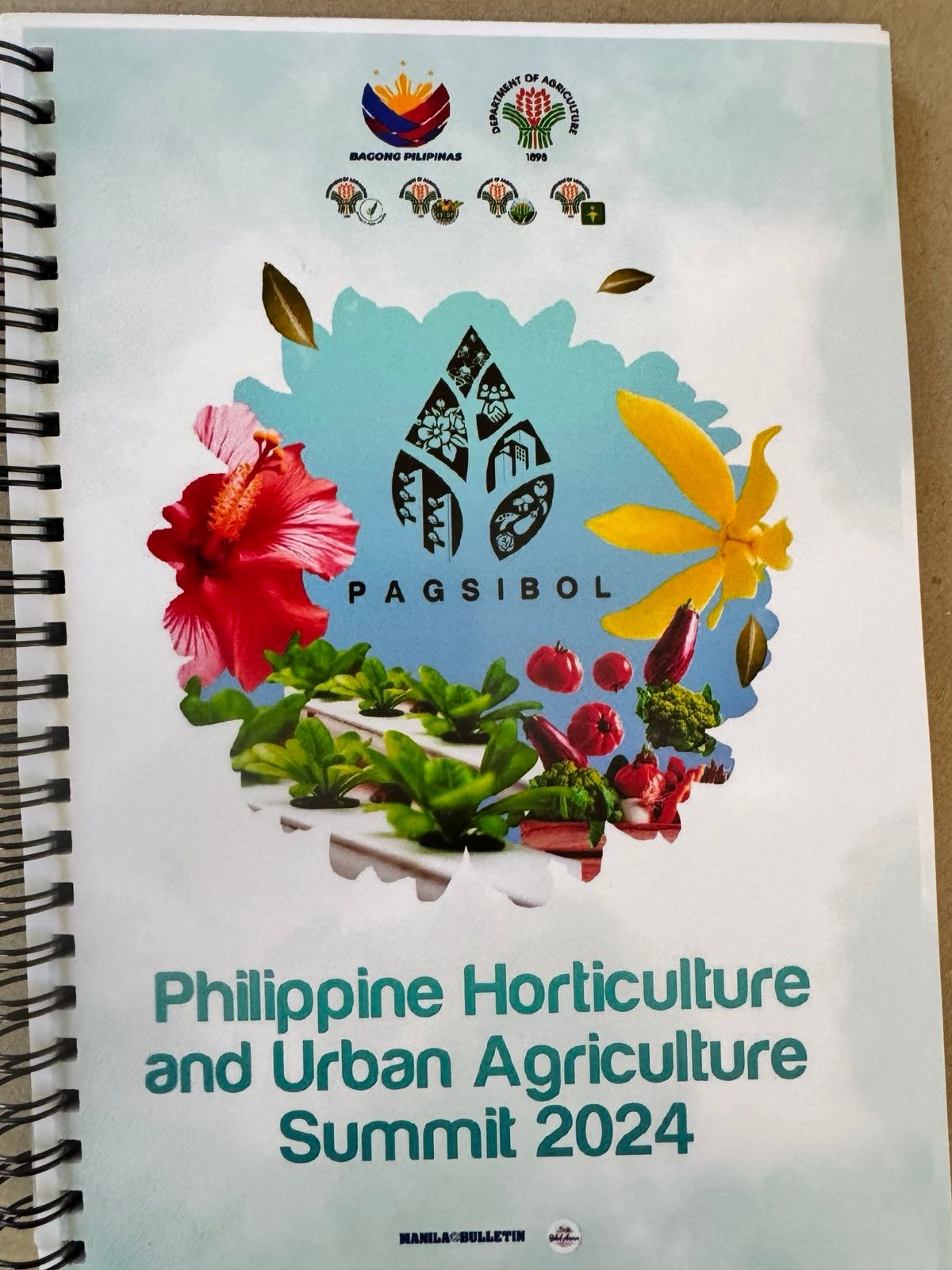UNDER THE MICROSCOPE

The Philippine Horticulture and Urban Agriculture Summit 2024 was held May 3-6, 2024 at the A Mall, Makati City. As an avid gardener and orchid hybridizer, I eagerly attended what was promised as a meeting of minds among stakeholders in the industry and government officials concerned, namely from the Department of Agriculture (DA) and the Department of Environment and Natural Resources (DENR).
There is a glimmer of hope for the industry that I had despaired about in my previous column (What ails the orchid industry? May 7, 2023, Manila Bulletin).
According to Mike Rimland of world-famous Costa Farms, the global retail value of ornamental plants according to one speaker, is worth over US$200 billion, more than the combined total of tea (around US$52 billion) and coffee (around US$75 billion). Shocking as it seems, it underscores the economic value of ornamental plants which the Philippines has barely explored. According to the Bureau of Plant Industry (BPI) speakers, our local market size is around P1.6 billion while local production is just P350 million with the rest filled up by imports, thus contributing to the balance of payments deficit.

The speakers, both local and international, have shown the way by way of their success stories and future business opportunities.
There are new initiatives like farm and flower tourism, where local and foreign tourists flock to Instagram-worthy scenery of fields in bloom and idealized landscapes. In this day and age of social media like Facebook, Tiktok and others, they are also taking advantage of virtually-free publicity as people post their selfies amid these fabulous backgrounds.
The International Ornamental Industry forum speakers spoke on the cut flower and potted annual business in the ASEAN region and which varieties are ideal for the Philippine setting (Taksa-on Vathesatogkit) and growing cut-flowers under protected greenhouse culture (Jerry Sangatanan). A surprising revelation is that tulips are now being grown locally under strictly-controlled conditions in Nueva Vizcaya.
Tessie Amore of the University of Hawaii and Surawit Wannakrairoj from the Kasetsart University, Thailand, spoke on breeding approaches for orchids and ornamental plants. Reynold Pimentel, noted Philippine plant breeder, related his experience in developing new cultivars with high ornamental value using Philippine endemic species
A session on the potentials of the landscape industry revealed that there is a shortage of available quality plants and trees that major land developers like Ayala Land and Villar Land require for landscaping. Their emphasis is on the use of Philippine plant and tree species that are environmentally-friendly and sustainable. That is a huge opportunity that can be explored. But our local nurseries and the real estate developers have to get together to come up with standards for growing these ornamental plants and trees for use in public spaces.
The third day was all about urban agriculture, which we sorely need to grow vegetables and fruits, and stave off the rising costs of food and as a way to get the different elements of the community together. To make urban gardening more attractive, edible landscaping makes these gardens look pretty and Instagram-worthy as well. Other ways of growing plants with limited space are in growth chambers (green pods and greenhouses), vertical farming and protected environments.
There are so many opportunities in the horticultural industry, not only locally but in the export of plants, cut-flowers and foliage which some, like Insular Botanicals of Lucban, Quezon pioneered. As previously mentioned, the global market for ornamental plants and flowers is humongous, and we are barely scratching the surface, to speak.

But we need to address the challenges, from regulatory restrictions, lack of governmental support and financing to the setting up of mass production facilities for propagating select varieties and even subsidies for importing good stock and setting up growing facilities. Powerhouses in the ornamental plant industry like Taiwan, Thailand and Singapore all provided their growers with financial support that enabled the industry to grow and eventually stand on their own.
A serious re-evaluation of the Wildlife Resources Conservation and Protection Act (RA 9147) and its implementing rules and regulations (IRR) is needed at this point to unlock the full potential of our endemic plant species. As it is, almost all these endemic species are now available abroad and were actually the basis for the rise of the industry in other countries. Thus, these are no longer threatened by extinction other than in their local habitats, which are what needs to be protected. We have to allow our own people to benefit from them by allowing propagation of these endemic species and using them as breeding stock to come up with our own cultivars, hybrids and varieties that can be exported abroad as well as supply the local market.
Let’s hope our government officials are listening and responsive to this call.